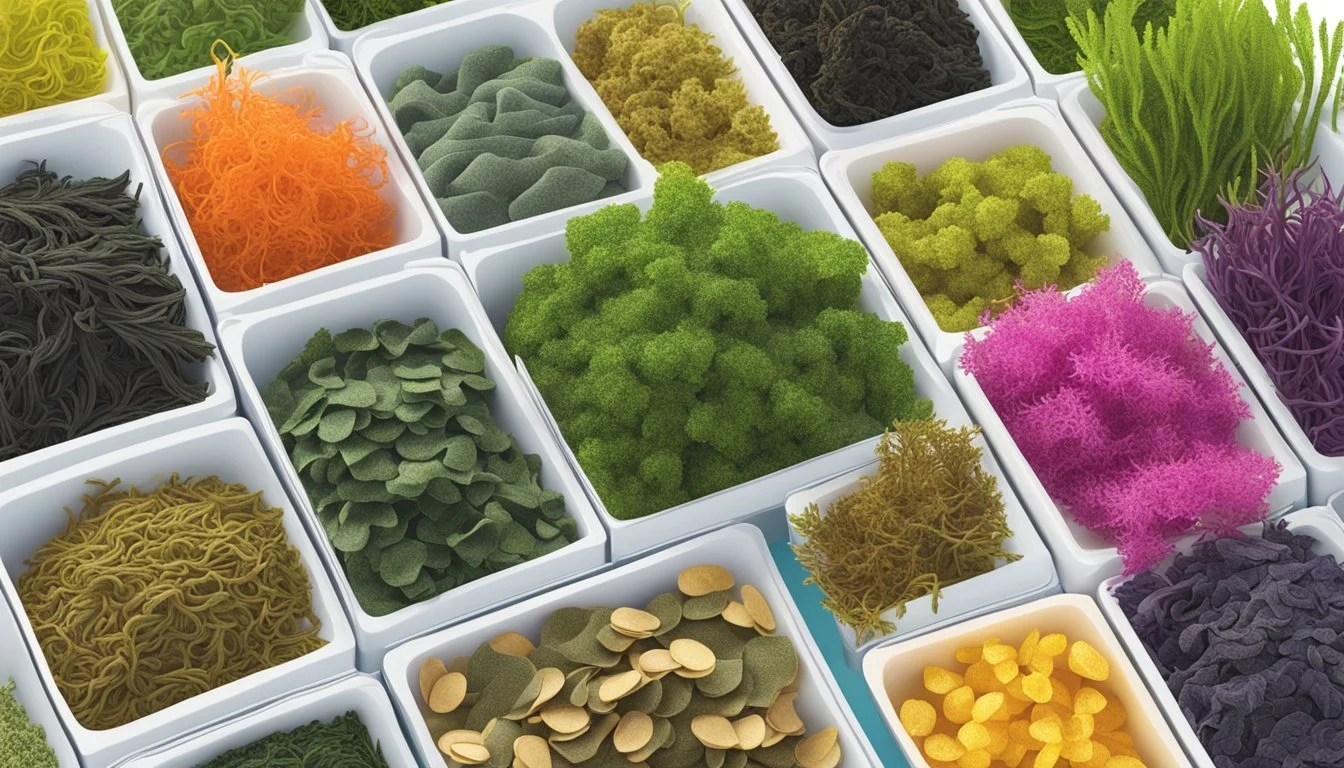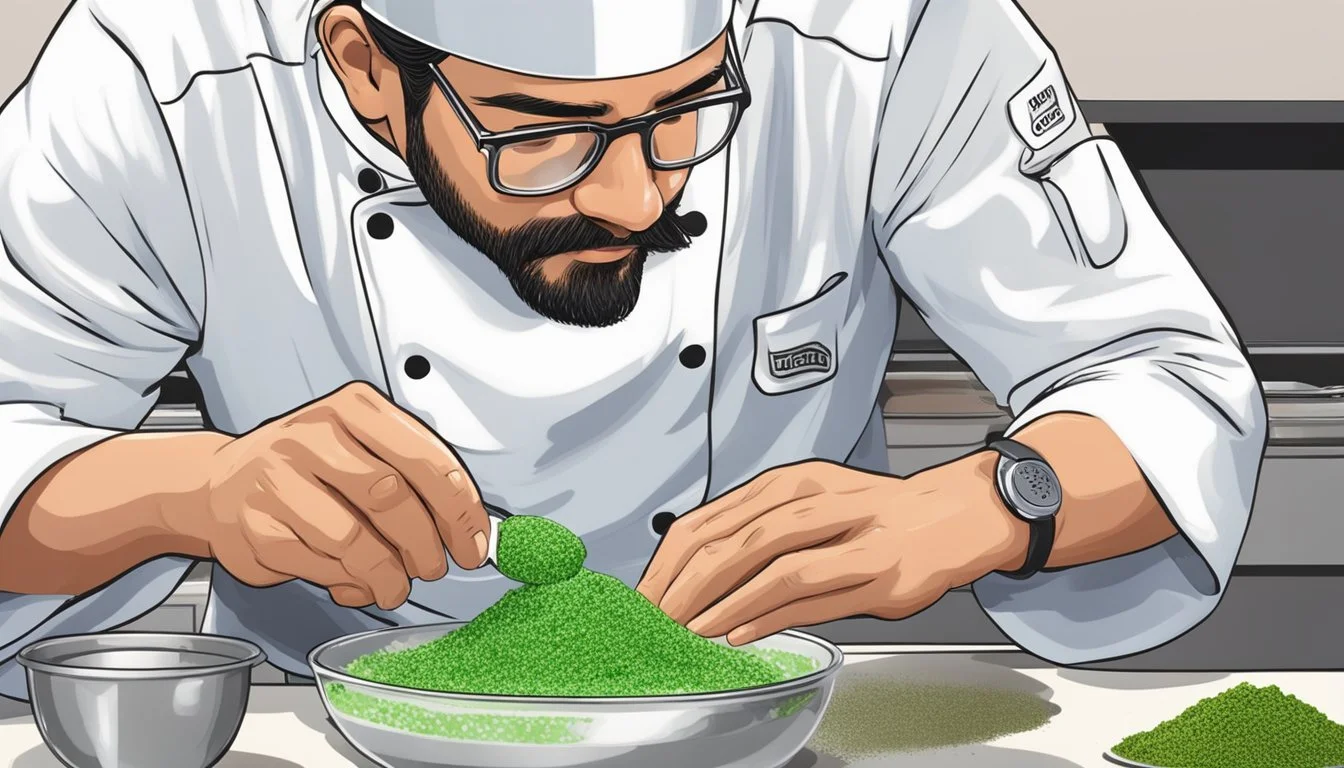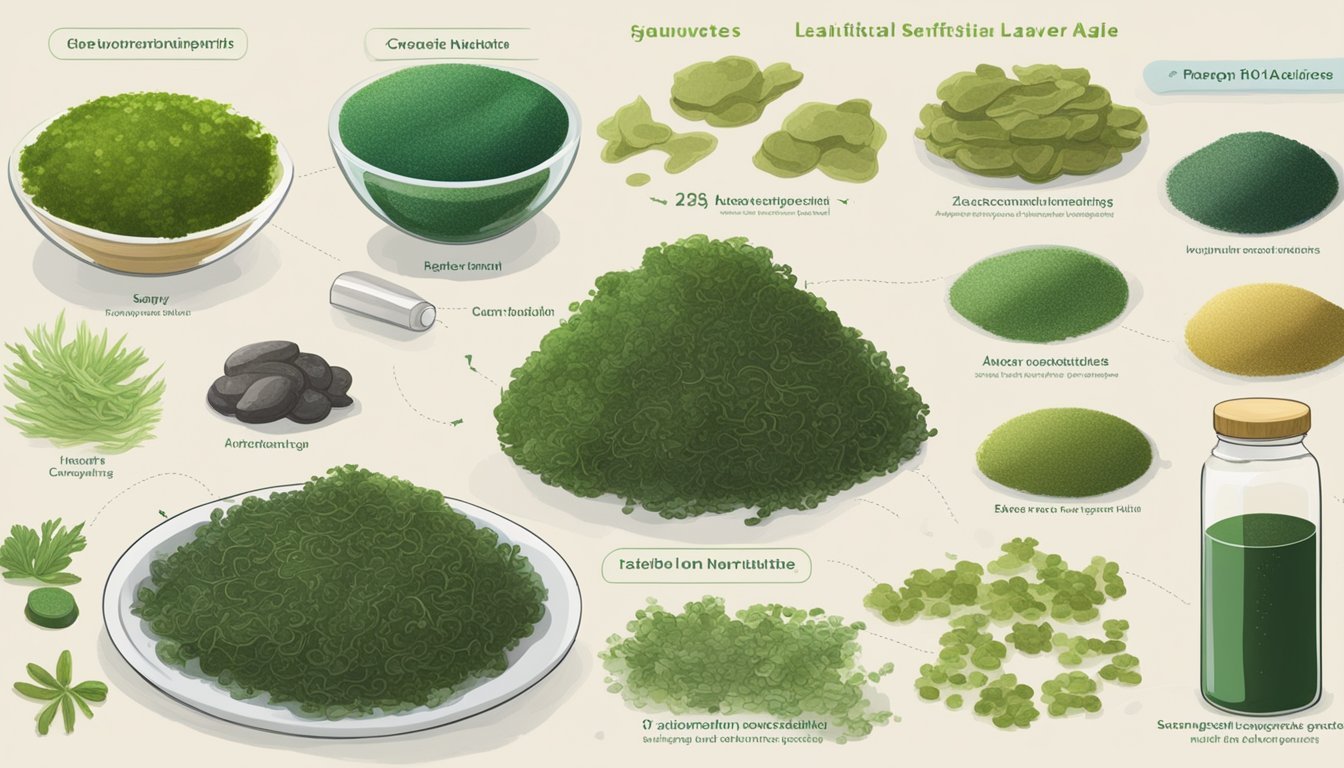Laver Substitutes
Top Seaweed Alternatives for Cooking
For those who love the unique, savory taste of laver but can't find it at their local store, discovering suitable substitutes is essential. Laver, also known as wild Atlantic Nori, is highly valued in both British and Japanese cuisine for its sweet and nutty flavor, high protein content, and rich supply of B vitamins. Fortunately, there are alternatives that can seamlessly blend with your recipes without sacrificing nutritional benefits.
One of the best substitutes for laver is dulse, another red sea vegetable. Dulse can be used raw or cooked, providing a similar nutritional profile with its high protein and vitamin content. Nori, commonly found in dark sheets used for sushi, is another viable option. It's made from the same plant as laver, making it a suitable replacement in various dishes, from soups to salads.
Those looking for a non-seaweed substitute might find paper-thin omelets to be a creative alternative. Especially in dishes like sushi rolls, these thinly baked eggs can replicate the texture and function of laver, offering a versatile and easily obtainable solution.
Understanding Laver
Laver, a type of red seaweed, plays a significant role in various culinary traditions. It is highly valued for its distinct flavor and nutritional benefits, making it a versatile ingredient in many recipes.
Origins and Culinary Uses
Laver, also known as Porphyra umbilicalis, is primarily harvested along the coasts of the Atlantic and Pacific Oceans. It is particularly popular in Japan, where it is called nori and is a key ingredient in sushi. In Wales, it is used to make the traditional dish laverbread.
Laver's flavor is often described as umami-packed with a slightly sweet and nutty profile. It can be used both raw and cooked, enhancing soups, stews, and salads.
Nutritional Profile
Laver is nutrient-dense, offering a wide range of essential minerals and vitamins. It is a rich source of iodine, which is crucial for thyroid function. It also contains high levels of potassium, magnesium, and calcium, contributing to bone health and muscle function.
Additionally, laver is packed with vitamin B12 and glutamate, enhancing its umami flavor. Its nutritional composition supports various health benefits, making it an excellent addition to a balanced diet.
Distinct Characteristics
Laver stands out due to its unique texture and appearance. When dried, it forms delicate, crispy sheets, often compared to nori. These sheets can be rehydrated to reveal a soft and pliable texture.
The seaweed's flavor profile features a prominent umami taste, attributed to the presence of glutamate. Its versatility allows it to be seamlessly incorporated into diverse culinary creations, from sushi rolls to hearty soups. The distinct characteristics of laver make it a prized ingredient in global cuisines.
Popular Laver Alternatives
There are many alternatives to laver that can be used in various recipes, ranging from different seaweed varieties to herbal substitutes. Each option brings its unique flavor and nutrients, making them suitable for different culinary needs.
Seaweed Varieties
Nori: Nori is a popular seaweed, often found in sushi. It has a distinct flavor and can be used both raw and cooked. Its dark sheets are similar to laver and can be easily substituted in many recipes.
Dulse Flakes: Dulse flakes are another excellent option. They offer a similar savory taste with a hint of saltiness. Dulse is available in whole leaf, granules, or powder forms, making it versatile in cooking.
Sea Lettuce: Sea lettuce, known for its bright green color and mild taste, can also replace laver. This seaweed is suitable for salads and as a garnish for various dishes, adding a fresh touch.
Icelandic Kelp Blend Powder: This powder combines different types of seaweeds, including dulse, to offer a rich mix of flavors. It's a convenient option for seasoning soups, stews, and even omelets.
Herbal Substitutes
Shiso (Japanese Basil): Shiso leaves have a unique minty flavor with hints of basil and licorice. They can be used fresh or cooked and are especially popular in Japanese cuisine, adding a distinctive taste to dishes.
Herbes de Provence: This blend includes thyme, rosemary, oregano, marjoram, and sometimes lavender. It's a versatile mix that can replace laver in dishes needing a herbal touch. Use it to season meats and vegetables.
Basil: Fresh or dried basil offers a sweet and peppery flavor. While not a direct match to laver, it can enhance dishes with its aromatic qualities, making it a good alternative for certain recipes.
Rosemary: With its strong, woody taste, rosemary can be a valuable substitute. It's best used in roasted dishes and marinades, offering depth and richness that different seaweeds usually provide.
Culinary Applications of Substitutes
Using alternatives to laver can enhance salads, soups, savory dishes, meats, desserts, and various sweets. Each substitute offers unique flavors and textures suitable for diverse recipes and cuisines.
Salads and Soups
In salads and soups, substitutes like laver flakes, nori, and aonori provide a salty and mildly sweet flavor. These seaweeds can be rehydrated in water and then added to salads for a nutritious boost or sprinkled over soups such as miso soup and dashi broth for depth of flavor.
When preparing salads, adding rehydrated seaweeds can make the dish richer in texture and taste. For soups, these seaweed alternatives can be integrated into the broth to impart a subtle umami essence, enhancing the overall experience.
Savory Dishes and Meats
For savory dishes, incorporating seaweed substitutes like nori and a combination of dulse can recreate the desired umami notes traditionally associated with laver. For meats, particularly lamb, these seaweeds can be used in marinades or as a garnish.
In Asian cuisines, kombu and wakame are often used in broths and as wrap ingredients for meats. By using these substitutes, chefs can achieve a complex flavor profile. Dried seaweed flakes can be used as a seasoning for a variety of savory dishes, ensuring a consistent and balanced flavor.
Desserts and Sweets
While seaweed is less common in desserts, some desserts utilize its unique properties. Parfait d’Amour, a liqueur with floral and citrusy notes, can be used as a substitute for seaweed flavors in recipes that require a sweet yet subtly complex flavor.
In creating sweets like custards, ice cream, and certain cakes, the inclusion of such liqueurs can add a nuanced depth. Seaweed, though unconventional, can play a role in desserts by providing a balance of sweet and savory, making for memorable and distinctive culinary creations.
Making the Right Choice
Selecting the ideal substitute for laver involves considering factors such as taste, nutritional value, and availability. Each substitute offers unique characteristics that may or may not align perfectly with the needs of your recipes.
Taste and Sensory Experience
Taste is paramount when selecting a laver substitute. Sea vegetables like dulse and nori offer similar umami flavors. Dulse has a mild, salty, and slightly sweet taste, making it an excellent choice for dishes requiring a nuanced flavor. Sea lettuce provides a salty and slightly bitter taste, suitable for salads and soups.
Texture also plays a crucial role. Dried laver substitutes like Icelandic kelp blend powder are convenient but may lack the chewy texture of whole leaf options. Consider the desired bite and crunch in your final dish when choosing the right substitute.
Nutritional Considerations
Nutrition is a significant factor when selecting laver substitutes. Sea vegetables are rich in essential minerals. Dulse and nori contain substantial amounts of iodine, magnesium, calcium, and potassium. These minerals support various bodily functions, including thyroid health and bone strength.
Polysaccharides and polyphenols present in seaweed contribute to numerous health benefits, including improved digestion and antioxidant properties. When comparing substitutes, it’s vital to consider these nutrients to maintain a balanced diet.
Availability and Storage
Availability can greatly influence your choice. Fresh sea vegetables like sea lettuce might be harder to find and have a shorter shelf life. Dried options such as dulse flakes and Icelandic kelp blend powder are more readily available and convenient for long-term storage.
Whole leaf substitutes can be stored more easily compared to their fresh counterparts. Ensure proper storage in a cool, dry place to maintain quality and extend shelf life. The accessibility of substitutes like nori in most grocery stores makes them a practical option for most users.
Preparation Techniques
Proper preparation techniques can enhance the flavor and texture of laver substitutes, ensuring optimal use in various recipes. Rehydrating, drying, and creating flavor infusions play key roles in this process.
Rehydrating Seaweeds
Rehydrating dried seaweeds such as laver begins with soaking them in cold water. Seaweeds usually take around 10-15 minutes to rehydrate.
Drain the water once they have softened. For soups and salads, rinse the seaweed to remove excess salt. Adjust the soaking times based on the desired texture: shorter times for a firmer texture, longer for a softer one.
Prepared seaweed can be added to a variety of dishes like miso soup or sushi rolls, retaining their nutritional benefits and distinct flavors.
Drying and Storing Herbs
Drying herbs like lavender, rosemary, and thyme preserves their flavors for extended use. This process starts by hanging fresh herbs upside down in a dry, airy space.
Air drying takes about two weeks. For quicker results, use a dehydrator at around 95°F. Once dried, store herbs in airtight containers away from sunlight.
Tip: Label and date your jars to keep track of freshness. Dried herbs maintain their potency for about 6-12 months, providing consistent flavor for culinary uses.
Creating Flavor Infusions
Flavor infusions harness the essence of plants like herbs and seaweed, adding depth to dishes. For a seaweed infusion, soak dried seaweed in water, broth, or alcohol for at least 30 minutes.
Herbal infusions often involve simmering herbs like savory or Japanese basil in oil or water to extract flavors.
Use lavender substitutes, such as herbs de Provence, in teas or culinary oils.
Experiment with different combinations of herbs and spices to create unique flavor profiles. Infusions can be strained and stored in the refrigerator for up to a week, ready to enhance stews, marinades, and sauces.
Integrating Substitutes into Recipes
When replacing laver in your dishes, it's crucial to consider the unique flavors and textures of the alternatives. This guide covers how to adjust recipes when using substitutes and explores some non-culinary applications for these ingredients.
Adjusting Recipes for Alternatives
When substituting laver in recipes, start by understanding the flavor profile of the alternative. Dulse and nori are excellent substitutes, offering similar marine flavors. Dried seaweed is another option but tends to have a slightly different texture.
For soups and salads, use 1 teaspoon of dried seaweed for every 1 tablespoon of fresh laver. In miso soup, nori can replace laver at a 1:1 ratio, preserving the dish's flavor.
In salads, chopped dried seaweed can mimic the crunch and saltiness of fresh laver. For savory dishes like stir-fries, consider using kelp or wakame in similar proportions. Adjust seasonings like salt and soy sauce to balance the intensified flavors from dried substitutes.
Non-Culinary Uses
These sea vegetables aren't limited to culinary applications. Dried seaweed and nori are often used in cosmetic products for their minerals and vitamins.
The mint family, including lavender and other herbs, can also serve as natural fragrances or in bath products. When integrating these herbs into non-culinary uses, a small quantity goes a long way.
For example, adding a couple of tablespoons of dried seaweed to a bath can offer a soothing experience. Similarly, lavender flowers can be used in sachets to freshen up linen closets or drawers.
By understanding how to use these alternatives effectively, you can maintain the integrity of your dishes and even explore creative uses beyond the kitchen.
Nutritional Enhancements
Laver and its substitutes provide essential nutrients, including iodine, magnesium, calcium, and potassium, along with unique polysaccharides like fucoidan. These seaweed options also offer a significant umami flavor and diverse health benefits.
Health Benefits of Laver and Substitutes
Laver and Substitutes: Laver, a type of seaweed, and its substitutes such as kelp are rich in iodine, magnesium, calcium, and potassium. These nutrients are crucial for thyroid function, bone health, and muscle function. Iodine in laver supports healthy metabolic rates, while magnesium and calcium aid in maintaining strong bones. Potassium helps regulate fluid balance and nerve signals.
Polysaccharides and Fucoidan: Laver and alternatives contain polysaccharides such as fucoidan, which offer anti-inflammatory and antiviral properties. Fucoidan is known to support the immune system and potentially reduce tumor growth. These elements are valuable for overall health and can be a beneficial addition to a balanced diet.
Seaweed substitutes not only mirror the nutritional profile of laver but also provide umami flavor, enhancing the taste of various dishes while supporting health.
Cultural Significance
Laver, a seaweed prominent in various cuisines, holds significant cultural value in Japan and other culinary traditions. This section explores the importance of laver in Japanese culture and the role of various herbs in global cuisines.
Laver in Japanese Culture
In Japan, laver is an essential component of many traditional dishes. Also known as "nori,” it is commonly used in sushi, where it wraps around rice and seafood. Another frequent use is in miso soup, where small pieces of nori add depth and nutrition.
Nori is also a key ingredient in dashi, a foundational broth in Japanese cuisine. This broth is known for its rich umami flavor. The Japanese appreciate laver not only for its culinary uses but also for its cultural and historical significance. The practice of seaweed farming has been part of Japanese tradition for centuries, reflecting a deep connection between the people and the sea.
Herbs in Different Cuisines
Herbs play a diverse role in various cuisines around the world. Basil, thyme, and oregano are staples in Mediterranean cooking, often found in pasta, pizza, and salads. In French cuisine, the blend known as herbes de Provence, typically includes thyme and lavender along with other aromatic herbs.
English cuisine frequently features herbs like thyme and English lavender in both savory dishes and desserts. Each herb brings unique flavors and aromas, contributing to the distinctiveness of local dishes. The cultural importance of these herbs is evident in traditional recipes passed down through generations. Herbs not only enhance flavor but also connect people to their culinary heritage.
Substitution Dos and Don’ts
When substituting laver in recipes, it’s crucial to consider the flavor and texture of the alternative, as well as how it interacts with other ingredients to maintain the culinary balance. Here are practical guidelines for successful substitutions:
Matching Flavors and Textures
Choosing the right substitute for laver involves matching its unique flavor and texture. Dulse and nori are excellent alternatives due to their similar savory and umami characteristics. Dulse offers a slightly peppery taste, while nori provides a milder, sweet-savory profile.
Shiitake mushrooms can be used for their umami richness. Rehydrate dried shiitake in water to mimic the texture of laver.
Avoid overly pungent alternatives like kombu, which can overpower the dish.
Consider the texture as well. Flaky alternatives work best in salads, while more substantial substitutes are suited for cooked dishes.
Understanding Food Synergy
Substitutes should complement other ingredients. For dishes with a delicate flavor balance, such as soups or salads, choose subtle alternatives like nori. Its taste won’t overshadow other components.
When preparing stir-fries or robust stews, stronger flavors from dulse or seasoned seaweed blends fit well, maintaining harmony in the dish.
Incorporate monosodium glutamate (MSG) for enhanced umami without affecting flavor balance.
Additional herbs and spices like parsley or cilantro can add complementary freshness, while avoiding flavors that clash with the dish’s profile.
Dos: Use alternatives that mimic the savory, umami, or slightly sweet notes of laver. Combine substitutes based on texture needs, like flakes for garnishes and larger pieces for cooking.
Don'ts: Refrain from choosing overly strong or incompatible flavors and textures. Carefully balance your substitute to maintain the dish's intended taste and consistency.










